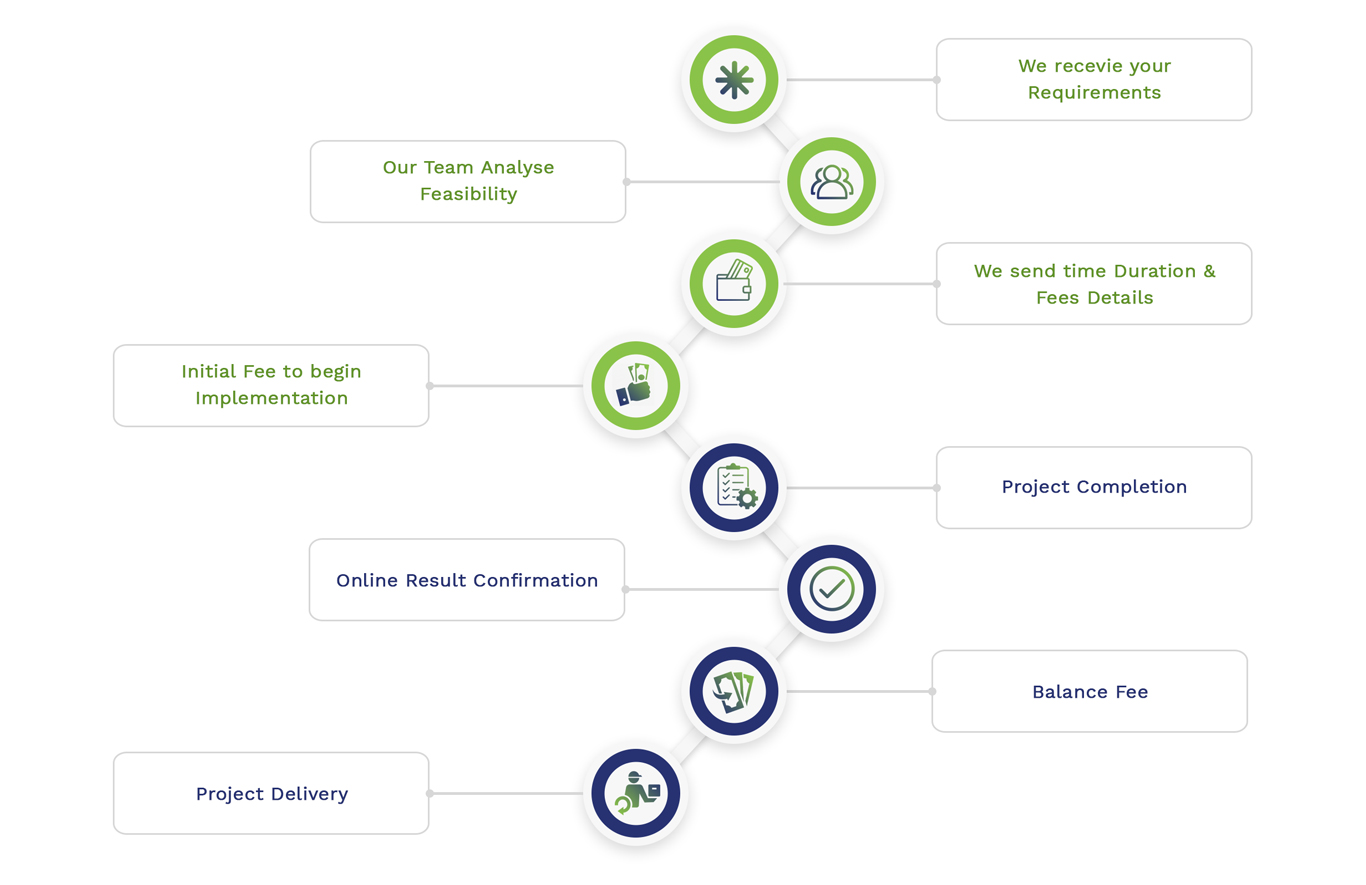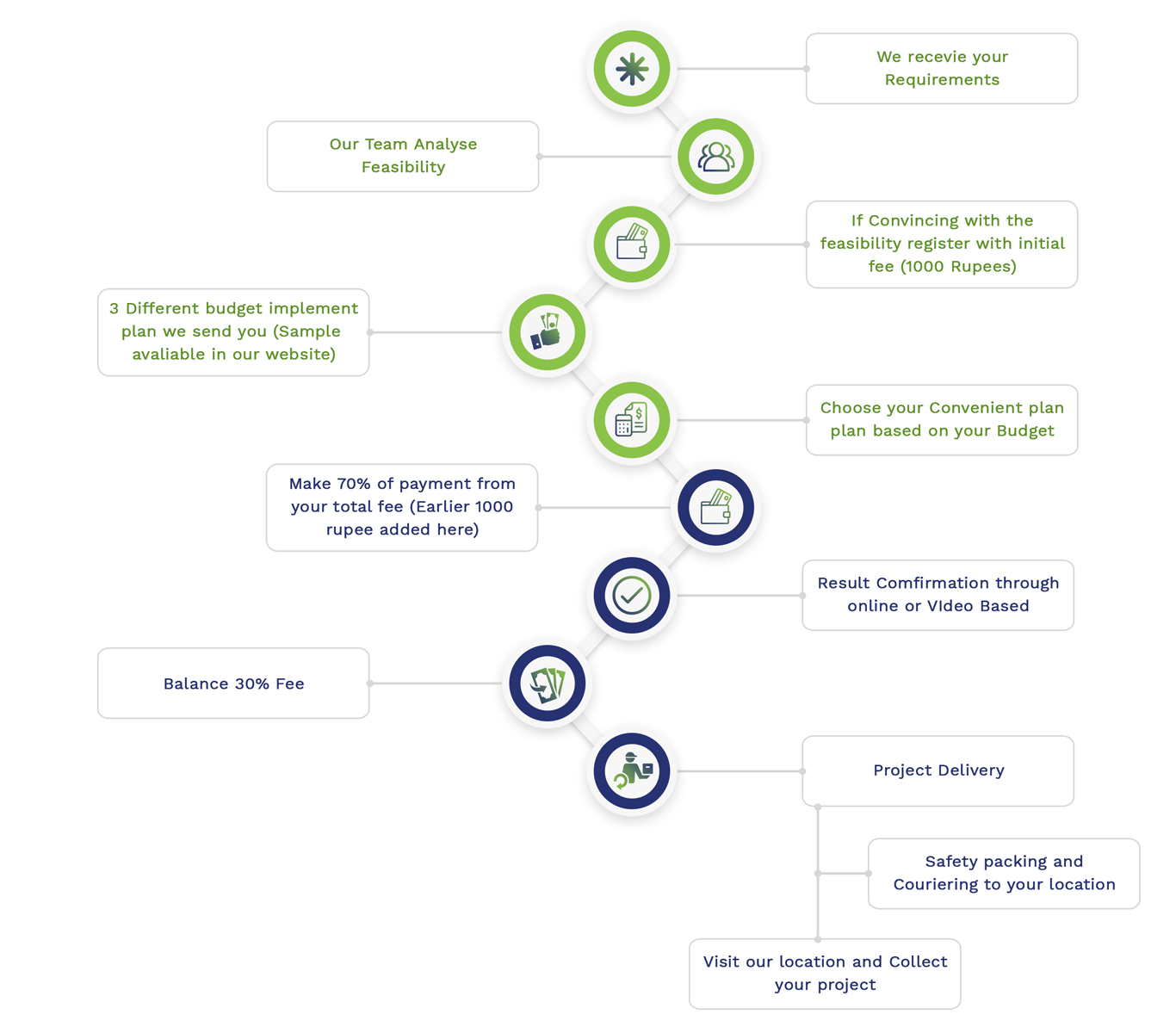Help With MATLAB Assignment are provided by us along with complete instance code and description, we suggest stepwise guidelines based on the performance analysis of different machine learning methods in MATLAB. If you require any type of services and guidance then contact us we provide you with brief explanation and good results. The following is an organized instance which you could adjust to your certain necessities:
Example: Performance Analysis of Different Machine Learning Algorithms in MATLAB
Step 1: Define the Problem
On a provided dataset, the process of comparing the effectiveness of various machine learning methods is the major objective. Generally, our team intends to employ categorization precision, F1-score, accuracy, and recall as performance metrics.
Step 2: Load and Preprocess the Data
We plan to utilize the Iris dataset for this instance.
% Load the dataset
load fisheriris;
data = meas; % Features
labels = species; % Labels
% Split the data into training and testing sets
cv = cvpartition(labels, ‘HoldOut’, 0.3);
XTrain = data(training(cv), :);
YTrain = labels(training(cv), :);
XTest = data(test(cv), :);
YTest = labels(test(cv), :);
Step 3: Train Different Machine Learning Models
Typically, the three various classifiers such as Decision Tree, K-Nearest Neighbors (KNN), and Support Vector Machine (SVM) must be trained and assessed.
% Train a Decision Tree
treeModel = fitctree(XTrain, YTrain);
% Train a K-Nearest Neighbors (KNN) Classifier
knnModel = fitcknn(XTrain, YTrain);
% Train a Support Vector Machine (SVM) Classifier
svmModel = fitcsvm(XTrain, YTrain);
Step 4: Evaluate the Models
On the test data, our team focuses on assessing every model and estimating performance metrics.
% Predict and evaluate the Decision Tree
YPredTree = predict(treeModel, XTest);
accuracyTree = sum(YPredTree == YTest) / numel(YTest);
% Predict and evaluate the KNN
YPredKNN = predict(knnModel, XTest);
accuracyKNN = sum(YPredKNN == YTest) / numel(YTest);
% Predict and evaluate the SVM
YPredSVM = predict(svmModel, XTest);
accuracySVM = sum(YPredSVM == YTest) / numel(YTest);
% Display accuracies
fprintf(‘Decision Tree Accuracy: %.2f%%\n’, accuracyTree * 100);
fprintf(‘KNN Accuracy: %.2f%%\n’, accuracyKNN * 100);
fprintf(‘SVM Accuracy: %.2f%%\n’, accuracySVM * 100);
Step 5: Calculate Additional Performance Metrics
In order to estimate F1-score, precision, and recall, we intend to employ confusion matrices.
% Confusion matrices
cmTree = confusionmat(YTest, YPredTree);
cmKNN = confusionmat(YTest, YPredKNN);
cmSVM = confusionmat(YTest, YPredSVM);
% Helper function to calculate precision, recall, and F1-score
function [precision, recall, f1] = calcPerformanceMetrics(confMat)
tp = diag(confMat); % True positives
fp = sum(confMat, 1)’ – tp; % False positives
fn = sum(confMat, 2) – tp; % False negatives
precision = mean(tp ./ (tp + fp));
recall = mean(tp ./ (tp + fn));
f1 = 2 * (precision * recall) / (precision + recall);
end
% Calculate metrics for Decision Tree
[precisionTree, recallTree, f1Tree] = calcPerformanceMetrics(cmTree);
% Calculate metrics for KNN
[precisionKNN, recallKNN, f1KNN] = calcPerformanceMetrics(cmKNN);
% Calculate metrics for SVM
[precisionSVM, recallSVM, f1SVM] = calcPerformanceMetrics(cmSVM);
% Display results
fprintf(‘Decision Tree: Precision: %.2f, Recall: %.2f, F1-score: %.2f\n’, …
precisionTree, recallTree, f1Tree);
fprintf(‘KNN: Precision: %.2f, Recall: %.2f, F1-score: %.2f\n’, …
precisionKNN, recallKNN, f1KNN);
fprintf(‘SVM: Precision: %.2f, Recall: %.2f, F1-score: %.2f\n’, …
precisionSVM, recallSVM, f1SVM);
Full Example Code
% Load the dataset
load fisheriris;
data = meas; % Features
labels = species; % Labels
% Split the data into training and testing sets
cv = cvpartition(labels, ‘HoldOut’, 0.3);
XTrain = data(training(cv), :);
YTrain = labels(training(cv), :);
XTest = data(test(cv), :);
YTest = labels(test(cv), :);
% Train a Decision Tree
treeModel = fitctree(XTrain, YTrain);
% Train a K-Nearest Neighbors (KNN) Classifier
knnModel = fitcknn(XTrain, YTrain);
% Train a Support Vector Machine (SVM) Classifier
svmModel = fitcsvm(XTrain, YTrain);
% Predict and evaluate the Decision Tree
YPredTree = predict(treeModel, XTest);
accuracyTree = sum(YPredTree == YTest) / numel(YTest);
% Predict and evaluate the KNN
YPredKNN = predict(knnModel, XTest);
accuracyKNN = sum(YPredKNN == YTest) / numel(YTest);
% Predict and evaluate the SVM
YPredSVM = predict(svmModel, XTest);
accuracySVM = sum(YPredSVM == YTest) / numel(YTest);
% Display accuracies
fprintf(‘Decision Tree Accuracy: %.2f%%\n’, accuracyTree * 100);
fprintf(‘KNN Accuracy: %.2f%%\n’, accuracyKNN * 100);
fprintf(‘SVM Accuracy: %.2f%%\n’, accuracySVM * 100);
% Confusion matrices
cmTree = confusionmat(YTest, YPredTree);
cmKNN = confusionmat(YTest, YPredKNN);
cmSVM = confusionmat(YTest, YPredSVM);
% Helper function to calculate precision, recall, and F1-score
function [precision, recall, f1] = calcPerformanceMetrics(confMat)
tp = diag(confMat); % True positives
fp = sum(confMat, 1)’ – tp; % False positives
fn = sum(confMat, 2) – tp; % False negatives
precision = mean(tp ./ (tp + fp));
recall = mean(tp ./ (tp + fn));
f1 = 2 * (precision * recall) / (precision + recall);
end
% Calculate metrics for Decision Tree
[precisionTree, recallTree, f1Tree] = calcPerformanceMetrics(cmTree);
% Calculate metrics for KNN
[precisionKNN, recallKNN, f1KNN] = calcPerformanceMetrics(cmKNN);
% Calculate metrics for SVM
[precisionSVM, recallSVM, f1SVM] = calcPerformanceMetrics(cmSVM);
% Display results
fprintf(‘Decision Tree: Precision: %.2f, Recall: %.2f, F1-score: %.2f\n’, …
precisionTree, recallTree, f1Tree);
fprintf(‘KNN: Precision: %.2f, Recall: %.2f, F1-score: %.2f\n’, …
precisionKNN, recallKNN, f1KNN);
fprintf(‘SVM: Precision: %.2f, Recall: %.2f, F1-score: %.2f\n’, …
precisionSVM, recallSVM, f1SVM);
Description
- Loading and Preprocessing Data: As training and testing sets, the dataset is divided.
- Training Models: The three various models are trained such as SVM, Decision Tree, and KNN.
- Evaluating Models: On the basis of accuracy, the models are assessed. In order to estimate F1-score, precision, and recall, confusion matrices are employed.
- Performance Metrics: From the confusion matrix, a helper function calcPerformanceMetrics is capable of estimating the F1-score, precision, and recall.
help with matlab assignment for research
Encompassing effective plans for research issues among different fields, an extensive instance project, and hints for writing the assignment document, we provide an organized technique to confront a MATLAB assignment that are concentrated on research issues:
Research Problem Plans
- Machine Learning and Data Analysis
- Anomaly Detection in Network Traffic
- Natural Language Processing for Sentiment Analysis
- Predictive Maintenance using Machine Learning
- Time Series Forecasting for Stock Prices
- Image Classification with Deep Learning
- Signal Processing
- Image Enhancement Techniques
- Speech Recognition Systems
- Noise Reduction in Audio Signals
- ECG Signal Analysis
- Real-Time Signal Filtering
- Control Systems
- Adaptive Control Systems
- Control Strategies for Autonomous Vehicles
- PID Controller Optimization
- Model Predictive Control (MPC) for Industrial Processes
- Robust Control of Nonlinear Systems
- Optimization
- Particle Swarm Optimization for Function Minimization
- Resource Allocation in Cloud Computing
- Genetic Algorithms for Optimization Problems
- Optimization of Renewable Energy Systems
- Multi-objective Optimization in Engineering Design
- Image Processing and Computer Vision
- Object Tracking in Video Sequences
- Medical Image Analysis
- Face Detection and Recognition
- Augmented Reality Applications
- 3D Reconstruction from Images
Instance Project: Image Classification with Deep Learning
Step 1: Define the Research Problem
For categorizing images into various kinds, we plan to construct a deep learning framework. It is appreciable to assess the effectiveness of the framework and contrast it with conventional machine learning methods.
Step 2: Load and Preprocess the Data
% Load the sample dataset
digitDatasetPath = fullfile(matlabroot, ‘toolbox’, ‘nnet’, ‘nndemos’, ‘nndatasets’, ‘DigitDataset’);
imds = imageDatastore(digitDatasetPath, …
‘IncludeSubfolders’, true, ‘LabelSource’, ‘foldernames’);
% Display some sample images
figure;
perm = randperm(10000, 20);
for i = 1:20
subplot(4,5,i);
imshow(imds.Files{perm(i)});
end
% Split the data into training and testing sets
[imdsTrain, imdsTest] = splitEachLabel(imds, 0.7, ‘randomize’);
Step 3: Define the Neural Network Architecture
layers = [
imageInputLayer([28 28 1])
convolution2dLayer(3, 8, ‘Padding’, ‘same’)
batchNormalizationLayer
reluLayer
maxPooling2dLayer(2, ‘Stride’, 2)
convolution2dLayer(3, 16, ‘Padding’, ‘same’)
batchNormalizationLayer
reluLayer
maxPooling2dLayer(2, ‘Stride’, 2)
convolution2dLayer(3, 32, ‘Padding’, ‘same’)
batchNormalizationLayer
reluLayer
fullyConnectedLayer(10)
softmaxLayer
classificationLayer];
options = trainingOptions(‘sgdm’, …
‘MaxEpochs’, 4, …
‘ValidationFrequency’, 30, …
‘Verbose’, false, …
‘Plots’, ‘training-progress’);
Step 4: Train the Neural Network
net = trainNetwork(imdsTrain, layers, options);
Step 5: Evaluate the Model
% Predict the labels of the test data
YPred = classify(net, imdsTest);
YTest = imdsTest.Labels;
% Calculate the accuracy
accuracy = sum(YPred == YTest) / numel(YTest);
disp([‘Test Accuracy: ‘, num2str(accuracy * 100), ‘%’]);
Step 6: Compare with Traditional Algorithms
% Extract features using HOG
hogFeatureSize = 28*28;
trainFeatures = zeros(size(imdsTrain.Files, 1), hogFeatureSize, ‘single’);
for i = 1:size(imdsTrain.Files, 1)
img = readimage(imdsTrain, i);
trainFeatures(i, 🙂 = extractHOGFeatures(img);
end
testFeatures = zeros(size(imdsTest.Files, 1), hogFeatureSize, ‘single’);
for i = 1:size(imdsTest.Files, 1)
img = readimage(imdsTest, i);
testFeatures(i, 🙂 = extractHOGFeatures(img);
end
% Train an SVM classifier
svmModel = fitcecoc(trainFeatures, imdsTrain.Labels);
% Evaluate the SVM model
YPredSVM = predict(svmModel, testFeatures);
accuracySVM = sum(YPredSVM == imdsTest.Labels) / numel(imdsTest.Labels);
disp([‘SVM Test Accuracy: ‘, num2str(accuracySVM * 100), ‘%’]);
We have provided an instance on the basis of performance analysis on the machine learning methods in MATLAB. Also, involving efficient plans for research issues among different disciplines, a widespread instance project, and hints for writing the assignment document, an organized technique to address a MATLAB assignment which is concentrated mainly on research issues are suggested by us in an elaborate way. The above indicated information will be both beneficial and assistive. Forward us your project requirements we guide you with brief steps and guidance.
Subscribe Our Youtube Channel
You can Watch all Subjects Matlab & Simulink latest Innovative Project Results
Our services
We want to support Uncompromise Matlab service for all your Requirements Our Reseachers and Technical team keep update the technology for all subjects ,We assure We Meet out Your Needs.
Our Services
- Matlab Research Paper Help
- Matlab assignment help
- Matlab Project Help
- Matlab Homework Help
- Simulink assignment help
- Simulink Project Help
- Simulink Homework Help
- Matlab Research Paper Help
- NS3 Research Paper Help
- Omnet++ Research Paper Help
Our Benefits
- Customised Matlab Assignments
- Global Assignment Knowledge
- Best Assignment Writers
- Certified Matlab Trainers
- Experienced Matlab Developers
- Over 400k+ Satisfied Students
- Ontime support
- Best Price Guarantee
- Plagiarism Free Work
- Correct Citations
Expert Matlab services just 1-click

Delivery Materials
Unlimited support we offer you
For better understanding purpose we provide following Materials for all Kind of Research & Assignment & Homework service.
 Programs
Programs Designs
Designs Simulations
Simulations Results
Results Graphs
Graphs Result snapshot
Result snapshot Video Tutorial
Video Tutorial Instructions Profile
Instructions Profile  Sofware Install Guide
Sofware Install Guide Execution Guidance
Execution Guidance  Explanations
Explanations Implement Plan
Implement Plan
Matlab Projects
Matlab projects innovators has laid our steps in all dimension related to math works.Our concern support matlab projects for more than 10 years.Many Research scholars are benefited by our matlab projects service.We are trusted institution who supplies matlab projects for many universities and colleges.
Reasons to choose Matlab Projects .org???
Our Service are widely utilized by Research centers.More than 5000+ Projects & Thesis has been provided by us to Students & Research Scholars. All current mathworks software versions are being updated by us.
Our concern has provided the required solution for all the above mention technical problems required by clients with best Customer Support.
- Novel Idea
- Ontime Delivery
- Best Prices
- Unique Work
Simulation Projects Workflow

Embedded Projects Workflow



 Matlab
Matlab Simulink
Simulink NS3
NS3 OMNET++
OMNET++ COOJA
COOJA CONTIKI OS
CONTIKI OS NS2
NS2






